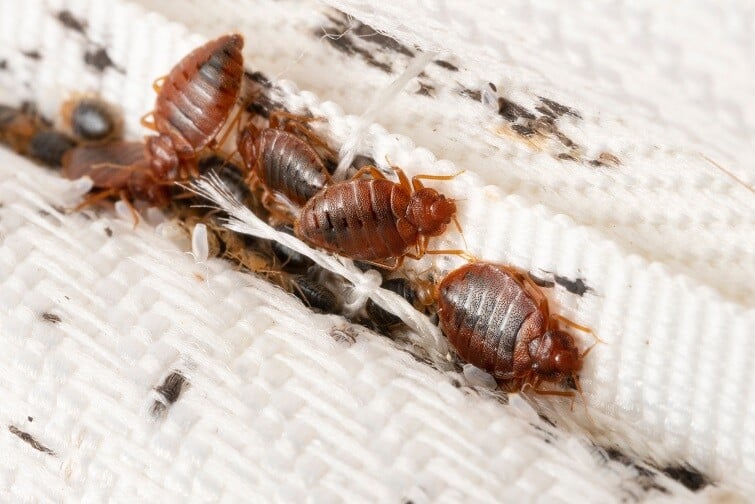Trusted DC Exterminator for Bed Bug Heat Treatment Near Me
Discovering the Science Behind Bed Pest Warm Treatments as a Lasting Insect Monitoring Technique
In the world of insect monitoring, the quest for lasting and effective services remains a continuous search. One such method that has actually gained traction in recent times is using warm therapies to combat bed insect problems. By utilizing the scientific research behind thermal fatality points for these consistent parasites, heat treatments use a promising alternative to standard chemical-based strategies. The complexities of exactly how warmth effectively eliminates bed insects and the more comprehensive implications for lasting pest management methods make this a subject worth discovering further.
Bed Insect Warm Treatment Process

Thermal Fatality Point for Bed Insects
Exposing bed pests to elevated temperature levels beyond their thermal resistance range is vital for accomplishing reliable removal in warmth treatment procedures. The thermal death factor for bed pests refers to the temperature level at which these insects can not endure. Research suggests that bed pests start to die when exposed to temperatures over 113 ° F(45 ° C) for a sustained period. As the temperature level enhances, so does the death price of bed bugs. At around 118 ° F(48 ° C ), bed insects start to die quickly, with a death rate of almost 99% within mins of direct exposure. This demonstrates the level of sensitivity of bed pests to heats and highlights the efficiency of warmth treatments in eliminating problems. By getting to and maintaining temperatures over the thermal fatality factor for bed bugs, insect management experts can make certain comprehensive removal of bed pest populations, including hard-to-reach areas where chemical treatments might be much less reliable. Understanding the thermal death point for bed insects is necessary for applying successful heat treatment methods and attaining lasting pest management outcomes.
Benefits of Warm Treatments
Having actually developed the vital thermal fatality point for bed insects, it is essential to currently explore the considerable benefits that heat treatments supply in effectively removing these resistant insects. One of the main benefits is that heat can permeate deep right into gaps and splits where bed bugs hide, making sure that also the most hard-to-reach areas are heated to deadly temperature levels.
In addition, heat treatments are environmentally friendly and non-toxic, making them a lasting parasite management strategy. Unlike chemical pesticides, heat therapies do not leave hazardous residues that can posture threats to human wellness or the atmosphere. This aspect is specifically essential in sensitive atmospheres such as healthcare facilities, schools, and houses where chemical usage may not be preferable.
Additionally, warm therapies have a high success rate in getting rid of bed bug invasions in a solitary treatment, lowering the need for several brows through and YOURURL.com lessening disruption to passengers. This efficiency not only conserves time and cash however additionally offers assurance to those moved here managing bed pest issues.
Efficiency of Warm Treatment

Research study studies have actually regularly shown the efficiency of heat therapies in achieving a high price of bed bug death. Correctly performed heat therapies can reach all the holes and cracks where bed pests may be nurturing, ensuring a thorough method to elimination. Furthermore, warmth treatments have the included benefit of killing bed pest eggs, which are frequently immune to traditional chemical therapies. Generally, the performance of heat treatments in getting rid of bed bug invasions makes them a sustainable and trustworthy pest management method.
Sustainable Pest Management Advantages
Carrying out lasting insect management practices offers lasting advantages for both the setting and public health and wellness. By using methods such as heat therapies for bug control, we can minimize the reliance on hazardous chemical pesticides that can have adverse results on ecological communities and human health and helpful site wellness - DC exterminator. Sustainable parasite monitoring methods help in maintaining biodiversity by targeting details insects without harming non-target microorganisms, consequently maintaining a well balanced environment
Additionally, lasting insect management methods contribute to the total health and health of the public. By decreasing exposure to poisonous chemicals utilized in typical insect control approaches, heat therapies provide a more secure alternative for bug management in property, business, and public rooms. This reduction in chemical usage additionally helps in protecting against pesticide deposits from infecting soil, air, and water, safeguarding ecological quality.
Final Thought
To conclude, bed bug warm therapies have actually been shown to be a efficient and lasting insect monitoring strategy. The thermal death point for bed insects makes them at risk to heat treatments, which have various benefits over typical chemical therapies. The effectiveness of warm therapies in removing bed pest problems while minimizing environmental effect highlights the capacity of this technique as a lasting remedy for parasite control.
The bed pest heat treatment process involves raising the temperature within plagued areas to a level that efficiently gets rid of bed insects and their eggs. By reaching and preserving temperatures above the thermal death point for bed insects, bug administration experts can make sure detailed removal of bed pest populaces, consisting of hard-to-reach locations where chemical therapies might be much less efficient. One of the main advantages is that heat can penetrate deep right into splits and holes where bed insects hide, guaranteeing that even the most hard-to-reach locations are warmed to dangerous temperatures. Unlike chemical treatments that may leave behind immune populaces, warm treatments supply a safe and eco friendly service that can penetrate deep right into furnishings, walls, and other hard-to-reach locations where bed insects hide.
The thermal fatality point for bed pests makes them prone to warm treatments, which have countless advantages over traditional chemical therapies.